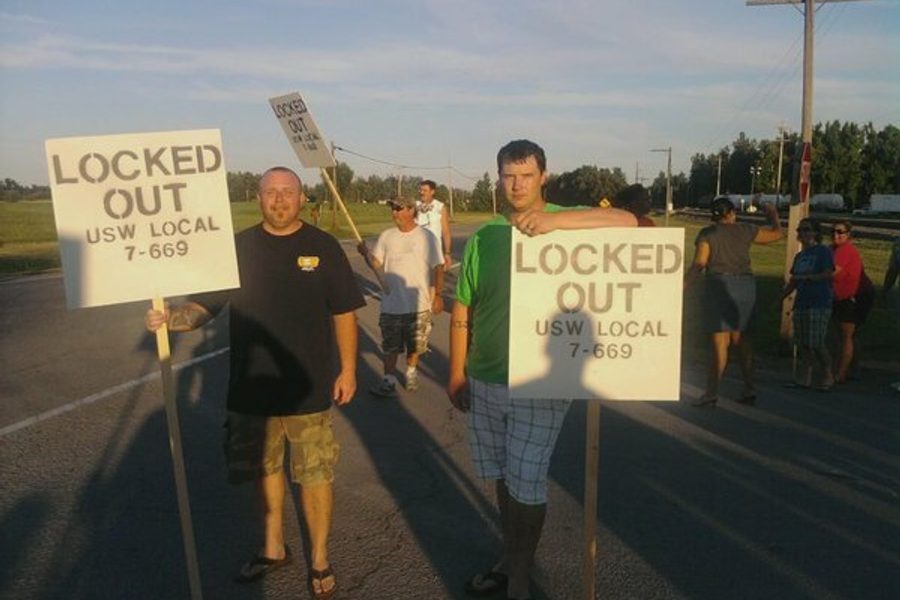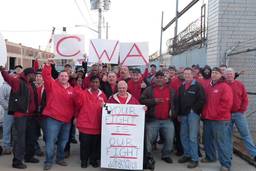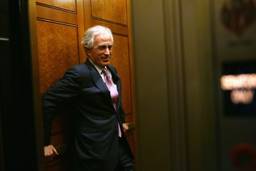On Monday, a Nuclear Regulatory Commission (NRC) team arrived at Honeywell’s Metropolis, Ill., uranium conversion plant to do a routine weeklong inspection. Recently, workers at the plant have alleged that the employee refrigerator in the control room of the main processing building has repeatedly tested positive for dangerous levels of uranium. But because Honeywell will not allow a qualified union worker to accompany NRC representatives on their inspections if the workers are on layoff, the union claims that the company is putting them and the local community at risk.
During the last few years, the plant has faced problems with federal authorities over a series of safety issues. In March 2011, after an investigation by the Environmental Proection Agency (EPA), Honeywell pleaded guilty to one felony offense for knowingly storing hazardous radioactive waste without a permit in violation of the Resource Conservation and Recovery Act (RCRA)” and paid an $11.9 million fine to the federal government. Two months later, OSHA officially cited the company for 17 serious violations for the accidental release of toxic hydrogen fluoride (HF) gas directly into the atmosphere outside of the plant in December 2010.
Members of United Steel Workers Local 7-699, which represents workers at the Metropolis plant, claim that having a specifically designated worker present during inspections was the key to at least some of the company’s citations in 2011. The plant, workers say, is large and complex. Though inspectors are highly trained, they may miss small but crucial details during their visits. Union representatives, they say, can point out problems known to workers that regulatory officials may otherwise overlook.
So when workers found out that the union’s elected representative, USW Local 7-699 President Stephen Lech, would not be allowed to go on the NRC inspections because he is on what the union labels a “punitive” layoff, they were outraged. As union president, they say, Lech talks to more members of the union and has a more in-depth knowledge of safety issues than anyone else.
As the union’s representative, Lech had hoped to speak with NRC inspectors directly about the safety risks Honeywell employees face at the workplace. He says that the most egregious example has been in the aforementioned company refrigerator, located in the Feed material building, where approximately 20 people work in uranium processing. In weekly tests mandated by Honeywell, he says, that refrigerator has routinely yielded positive results for dangerous levels of uranium contamination. Long-term exposure to uranium, as the EPA points out, can lead to liver damage, internal irradiation and increased risk of cancer.
“Nobody wants to share a dirty refrigerator in the workplace. Now imagine if that wasn’t just dirt, but imagine if that was uranium — that’s the magnitude of this. It’s scary,” says Lech.
Lech says that the contamination has been exacerbated by Honeywell’s refusal to rehire the full-time employees who were solely tasked with cleaning the Feed Material Building. Those workers were laid off more than a year ago.
“The [uranium] is getting spread out all over the building,” says Lech. “Nobody is cleaning it up at the source … This is due to the fact that the company will not put the decontamination crew back on staff.”
As In These Times reported in August, Honeywell cancelled all summer vacations for its 400 workers because it claimed that it was unable to find enough workers to fill the shifts it needed — despite the fact that 21 union workers, including the Feed building decontamination crew, had not yet been recalled. As of October, all 21 of those workers are still on layoff.
“They can’t recall the staff because they would have to recall the union president,” Lech explains, “and they are fighting tooth and nail to not recall me.”
But the layoff isn’t just contributing to the contamination problems. Honeywell is also allegedly using it as an excuse to bar Lech from accompanying NRC on its inspection at all. Though Honeywell did not respond to an immediate request for comment, in an email to Lech provided by the union to In These Times, the plant’s Senior Human Resource Manager John “Buz” Wilham wrote:
“In regard to your expressed interest in attending the NRC Entrance meeting today at 2:00 PM, please be advised that in accordance with 10CFR19.14 (d), ‘…Each workers representative shall be routinely engaged in NRC-licensed or regulated activities under control of the licensee…’. While we appreciate your interest in attending this meeting, you are not an acceptable representative under the regulations. If another union representative who is a current employee of the plant wants to attend the Entrance meeting, they should let us know as soon as possible and we will accommodate the request.”
Previously, the union argues, OSHA had confirmed that workers, like Lech, who were on lockout or layoff were still employees and, under federal law, eligible to accompany OSHA on inspections of the plant. In fact, in February 2011, OSHA got a warrant from federal court ensuring that Lech, who had also been temporarily laid off at the time, would be allowed to accompany the team.
“OSHA has been showing increasing flexibility recently in terms of who [‘walkaround reps’] can be, including accepting representatives of community-based organizations who have strong ties with non-union workers,” explains Tom O’Connor, Executive Director of the National Council for Occupational Safety and Health. “The whole point, from OSHA’s view, is to get the most complete and accurate info on the hazards.”
However, rather than bring the matter before a judge like OSHA did, the NRC elected to side with Honeywell and block Lech from participating altogether. In an email to In These Times, NRC spokesperson Joey Ledford wrote:
“NRC regulations (10CFR19.14) have provisions for workers or worker representatives to accompany NRC inspectors, but if the representative of the workers is not an employee, the licensee must agree. Honeywell’s position was not to allow the USW local president to accompany NRC inspectors on-site but to allow a current union employee to accompany our inspector. Yesterday, we documented the union’s concerns and will be reviewing them. “
Though the laws governing workplace safety inspection methods for the NRC and the OSHA are indeed different, workplace safety advocates say that an inconsistent approach like this to inspections in the same facility can lead to key problems being overlooked.
“It does seem that some energy industry workers are caught up in a conflicting web of regulatory safety agencies, with NRC saying one thing and OSHA another,” says O’Connor. “This is a good example of why action is needed on the recent executive order issued by [President Obama], following up on the West disaster, in order to ensure that regulatory agencies share information fully and coordinate as much as possible their regulatory and enforcement functions to avoid this sort of conflicting message.”
As In These Times previously reported, seven different regulators were tasked with inspecting the West, Texas Chemical and Fertilized plant, which exploded in April killing 15, but because of different methods of inspections and scope of inspections, key clues were not pieced together between regulators which could have prevented the explosion. Earlier this year, President Obama signed an executive order to better coordinate and harmonize the efforts of multiple agencies in regulating safety.
At Honeywell’s uranium facility, four different regulators — OSHA, NRC, the EPA and the Department of Homeland Security (DHS) — are all tasked with performing inspections, which can lead to vast discrepancies in regulatory approaches. Until Obama’s executive order is fulfilled, having the same union representative present at all inspections could help mitigate this potential for oversight.
This past Saturday, Honeywell CEO Dave Cote, when asked about his ability to incorporate dissent into Honeywell’s management practices, told the New York Times, “If I’m very decisive and I surround myself with people who just want me to make decisions, then we’ll go off the cliff at 130 miles per hour, because at some point I’ll be wrong.”
As far as Lech is concerned, though, that’s exactly what’s happening with Honeywell’s approach to employee and community safety. “Here at Honeywell’s uranium plant in Metropolis,” he said, “We are certainly driving off a cliff at 130 miles per hour.”









